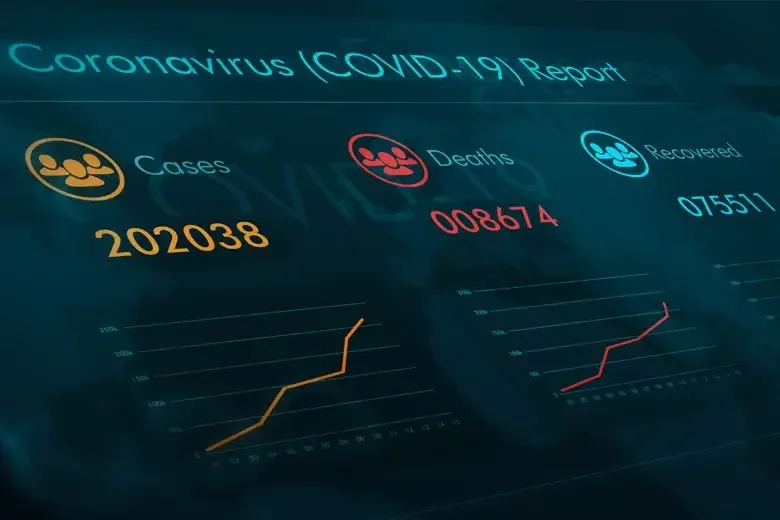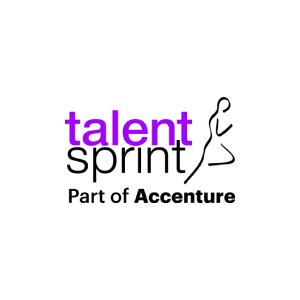Leveraging Data Science To Combat COVID-19

In our 10th edition of DeepTalk event titled ‘Pandemic Pandemonium’, Dr. Ramanan Laxminarayan, Leading Epidemiologist and Economist, NYT Op-Ed Columnist, Senior Research Scholar, Princeton University, and one of the Former Advisors to the Obama administration, shared intriguing answers to several thought-provoking questions.
What is epidemiology? It is the study and analysis of the distribution, patterns, and determinants of health and disease conditions in defined populations. And what if you add data with some AI power to this mix?
It can detect patterns, red flags, spot unsafe areas, and help policy-makers and healthcare teams respond quickly. This happens with a significant elevation of the efficacy of predictive epidemiology models. In addition, machine learning (ML) can help epidemiologists evaluate as many variables as desired without increasing statistical error. This matters because it is a problem that often arises with multiple testing bias, which is a condition that occurs when each additional test run on the data increases the possibility for error against a hypothetical target result.
Or imagine using Natural Language Processing (NLP) to capture clinical notes for preservation in EHR databases. Artificial intelligence (AI) can then identify conditions, diagnoses, and exposures that are otherwise difficult to grasp or identify using traditional data source mining. This opens new windows for data discovery and validation and knowledge representation.
Data against diseases
An enormous area for artificial intelligence (AI) in epidemiology is drug discovery, safety, and risk analysis. It is slated to be a $699 million global market by 2026. AI can also find applications in disease and syndromic surveillance, infection prediction and forecasting, monitoring population and incidence of disease, and use of AI in Immunization Information Systems (IIS). AI has tremendous value in mapping vaccinations to disease incidence, assessing the impact of public sentiment analysis, and public safety services such as mass notification.
Epidemiology and Data Science – it turns out they are an excellent formula. Put together, they can act as painkillers for a lot of problems. We need to find answers to several thought-provoking questions.
- Is Covid-19 ‘lab leak theory’ plausible?
- How do we build effective data models for a complex phenomenon like the COVID-19 pandemic?
- What has been the learning from the first and second waves?
- How good are the models that we worked on?
- What has been the accuracy and the fallacies?
- The data-angle of the pandemic with the wet-market theory of Covid-19.
Experts argue that humans are a very attractive host to viruses. It is natural for a virus to make the transition because it helps their ability to survive. They are just trying to adapt to us and not, maybe, kill us. The lab theory is not entirely plausible, but specialists remind us that we will never know the real answers given China’s unwillingness to share information. Every bit of evidence we have is circumstantial. It is difficult to rule out either of the pathways – whether the bat market or the lab.
‘Pandemic Pandemonium’ – A DeepTalk with Dr. Ramanan Laxminarayan, a Leading Epidemiologist and Economist
There is so much data being produced every day. You can build so many models, but what about a once-in-a-century event like the pandemic? How do we go about building models here?
Viruses show predictable behavior, to some extent. They work purely in an algorithmic sort of way, with not much variability. But human behavior dictates the transmission. That isn’t easy to predict. The scientific community faced this challenge in HIV scenarios, too.
Viral dynamics are not independent of how we behave. Understanding models through large data is excellent both from a prediction and response angle. Data Science is the only way in which we can understand diseases.
Artificial intelligence (AI) empowers epidemiology
These arguments and directions are significant given the direction that AI is taking in the epidemiology space.
- Globally, the total AI in the epidemiology market will reach $9.7 billion by 2026, and machine learning (ML) in the epidemiology market will touch $1.2 billion by 2026, as per ResearchandMarkets’s estimates.
- Related to vaccines R and D, we would probably see that AI in drug discovery and risk analysis will reach $699 million by 2026.
- Also, AI will support various disease-related public health and safety services, such as mass notification. We would also see EHR databases and other disease-related data aggregation.
Interestingly, Epidemiologic predictive models will find many improvements via advanced data analytics and various AI tools and techniques. This will be a giant leap, as AI can improve the efficiency and effectiveness of transforming healthcare data correlation to meaningful disease insights and information.
The first and second waves have shown a lot of impact, success, and fallacies of models. In India, the peculiar part is accepting when we see mind-blogging numbers. If we look back historically, no one would believe that we would see 400 million infections. Yet, some experts were spot-on about how ferocious the virus can be. The prediction was made when there were 400 cases in India. But a numerical person would know that exponential curves work that way. Even if psychologically it is hard to accept.
The crisis is not over yet
It looks like we have data. We have the tools too. But we might need the mindset of acceptance and interpretation to use it well so that we do not repeat the mistakes we have made already.
We need to fight these anti-science and anti-intellectual cultures emerging in the country, especially in social media. The deeper issue is that the challenges that the world faces today are not trivial. They need a significant level of study. Most people do not know about CRISPR, for instance. Most people would not know how to use it, and it is so powerful in changing our lives.
Asking a doctor to fix public health is like asking a plumber to improve the city infrastructure. Being a doctor does not mean that person is a data scientist. It is primarily anecdotes, he added.
We have to sort this out. Covid is going to be a minor problem compared to what lies ahead, like climate change. We have to get smarter and fight it together with knowledge.
Primary healthcare should be powered with early warning systems and timely screening systems. It should be about the management of well-being and not the management of disease, they both concluded with a sharp reminder to the country.
Artificial intelligence (AI) can help a lot in detecting diseases and helping to prevent them – but the actual ingredient in this pill is data. So it is important to build relevant capabilities to leverage Data Science and AI.

TalentSprint
TalentSprint is a leading deep-tech education company. It partners with esteemed academic institutions and global corporations to offer advanced learning programs in deep-tech, management, and emerging technologies. Known for its high-impact programs co-created with think tanks and experts, TalentSprint blends academic expertise with practical industry experience.



